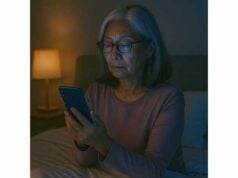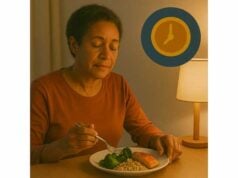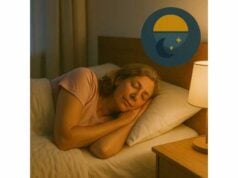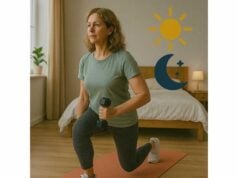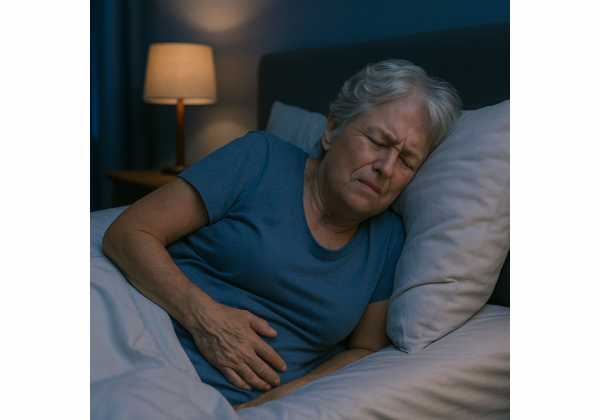
When pain follows you into the night, sleep becomes light, fragmented, and unrefreshing. By morning, everything hurts more, attention wobbles, and even small tasks demand outsized effort. This cycle is common in older adults, and it is fixable—often with practical changes you can make this week. In this guide, you will learn how pain disrupts sleep architecture, which conditions commonly flare after dark, and which bedtime habits reduce inflammation without relying solely on medication. We will cover positioning, pillows, room temperature, and safe use of analgesics at night. You will also get step-by-step, non drug strategies—heat, cold, gentle breathwork, and relaxation—to help your nervous system release its grip. Finally, we will outline when persistent night pain deserves a clinical workup. For a broader foundation that ties sleep, stress, and recovery together, see our overview of sleep, stress, and recovery practices.
Table of Contents
- How Pain Disrupts Sleep Architecture and Next Day Function
- Common Pain Conditions in Aging and Nighttime Flare Triggers
- Positioning, Pillows, Mattress, and Temperature for Comfort
- Evening Routines and Gentle Mobility to Reduce Inflammation
- Using Analgesics at Night: Safety, Timing, and Cautions
- Non Drug Options: Heat, Cold, Relaxation, and Breathwork
- When to Seek Clinical Evaluation for Persistent Night Pain
How Pain Disrupts Sleep Architecture and Next Day Function
Pain does not simply “wake you up.” It reshapes the night. Nociceptive signals (from tissues) and neuropathic signals (from nerves) increase arousal in the brain’s ascending reticular system and activate stress pathways. The result is lighter sleep, more stage shifts, and shorter bouts of deep slow-wave sleep (which restores tissues and stabilizes pain thresholds). Many people spend the night cycling through shallow stages with frequent micro-awakenings they barely recall. The next day, lowered pain thresholds and a sensitized nervous system make ordinary movement feel more intense.
Inflammatory chemistry plays a role. Pro-inflammatory cytokines (like IL-6 and TNF-α) rise with poor or fragmented sleep, and these same signals amplify nociception. That is why a single short night can set you up for more soreness and stiffness—and why a string of good nights often reduces baseline pain. Unfortunately, the cycle can spin the other way: high pain increases sympathetic tone (fight-or-flight), driving up heart rate and core temperature as bedtime approaches. Warmer bodies and hypervigilant brains resist sleep.
Sleep architecture also changes with age. Deep slow-wave sleep decreases, REM may come earlier, and circadian rhythms can shift earlier. If pain carves away more deep sleep on top of this age-related change, mornings feel especially unrefreshed. Add common midlife factors—nocturia, reflux, or medications that fragment sleep—and you can see how pain patients often wake in the first half of the night and stay awake.
The good news: you can nudge the system back toward restorative sleep with targeted steps. Easing inflammatory load in the evening, cooling the sleep environment, and supporting the body with the right pillow and position reduce micro-arousals. Gentle breathwork or muscle relaxation dampens the sympathetic “always on” signal so that pain is less likely to pull you to the surface. If analgesics are needed, smart timing reduces next-morning fog while covering the first half of the night—when pain-driven wake-ups commonly start.
A helpful mindset: think in 24-hour cycles. Your daytime activity, meal timing, light exposure, and pain control shape your night; your night shapes tomorrow’s pain thresholds. Improving either side helps the other.
Common Pain Conditions in Aging and Nighttime Flare Triggers
Not all night pain behaves the same. Understanding patterns helps you design the right plan.
Osteoarthritis (OA). Pain often ramps up after cumulative load—standing, stair climbing, or long walks—then flares when joints cool and stiffen during immobility. People with knee or hip OA commonly report first-half-of-the-night awakenings. Heat at bedtime, supported side-lying, and a small pre-bed analgesic dose (when appropriate) often help.
Degenerative spine disease. Cervical or lumbar spondylosis may ache with extension or flexion, and nerve root irritation can cause radiating pain or numbness. Here, neutral alignment is crucial: a too-high pillow may kink the neck; a too-soft mattress may over-flex the lumbar spine. Sleeping positions that unload the spine (e.g., side-lying with knee pillow; back-lying with a small pillow under the knees) reduce arousals.
Shoulder impingement or rotator cuff disease. Pain spikes in side-lying on the affected side or when the shoulder collapses forward. A front hug pillow that fills the space between chest and arm prevents impingement. Rotating positions through the night can help, but the key is one consistent starting setup.
Neuropathic pain (postherpetic neuralgia, diabetic neuropathy). These pains often burn or tingle, with touch sensitivity that makes sheets uncomfortable. Soft, breathable bedding and temperature control are essential. Gentle desensitization (light brushing, progressive pressure) before bed can reduce hypervigilance.
Fibromyalgia and central sensitization. These patterns feature heightened pain amplification and frequent sleep fragmentation. Routines that quiet the nervous system—paced breathing, body scan, and predictable lights-out—matter as much as mechanical support.
Headache disorders. Cervicogenic headaches and tension-type headaches commonly reflect neck strain and bruxism (jaw clenching). Neck support and jaw relaxation techniques at lights-out reduce overnight escalation.
Night flare triggers to watch for
- Late heavy meals or alcohol (reflux, inflammation, and temperature rise). See actionable timing rules in evening intake timing.
- Excess evening screen light (later melatonin release, warmer core temperature). Practical fixes are summarized in evening darkness routines.
- Inactive days (joints stiffen; pain signals amplify). Even 10–15 minutes of easy mobility in the evening can help.
- Cold, drafty rooms for OA; overly warm rooms for neuropathic pain.
Track which triggers matter for you. Two weeks of notes—what you did, how you slept, and how you felt at wake—often reveal patterns you can change.
Positioning, Pillows, Mattress, and Temperature for Comfort
Small mechanical changes can convert restless nights into steadier sleep by reducing pain signals that provoke micro-awakenings.
Positioning basics
- Side-lying (most forgiving). Keep the spine neutral: a pillow that fills the gap from ear to shoulder; a knee pillow to align hips; and, if shoulder pain nags, a hug pillow to prevent forward collapse.
- Back-lying (spine relief). Place a thin pillow under the knees to unload the lumbar spine. If snoring worsens when supine, elevate the head and torso 10–20 degrees with a wedge. For snoring without apnea, see targeted tactics in snoring fixes.
- Stomach-lying (least friendly). It cranks the neck and compresses the low back. If you cannot change, use a very thin pillow or none, and a small hip pillow to reduce lumbar twist.
Pillows: the unsung therapy
- Height: Your ideal pillow keeps the neck aligned with the rest of the spine—no side tilt in side-lying, no chin thrust in back-lying.
- Materials: Memory foam offers uniform support; latex rebounds and sleeps cooler; shredded foam lets you fine-tune height. For shoulder pain, consider a contoured cervical pillow. For neuropathic sensitivity, choose smooth, breathable covers (bamboo rayon, high-thread-count cotton).
- Specialty supports: A small lumbar roll for back-lying readers; a body pillow for hip OA; or a donut pillow to offload pressure points.
Mattress considerations
- Most older adults with mixed OA and back discomfort do well on medium-firm support with a pressure-relieving top layer (e.g., latex or memory foam).
- If your shoulders and hips ache in side-lying, you may need more pressure relief on top; if your low back sags in back-lying, you need more support beneath.
- Test changes in two-week blocks; your body needs time to adapt.
Temperature and microclimate
- Cooler rooms (around 17–20°C) support deeper sleep and dampen inflammatory signaling.
- Layer bedding so you can adjust without fully waking—thin duvet plus light blanket beats one heavy layer.
- For hot-flash–prone sleepers, a cooling pad or breathable mattress topper plus moisture-wicking pajamas prevents heat-driven awakenings. For a fuller room-by-room checklist, see bedroom setup tips.
Position change plan
Set up one primary position that supports your painful area, then add a secondary position you can switch to in seconds—pillows pre-placed, paths clear. When you wake sore, roll, swap, and resettle without turning on lights or devices.
Evening Routines and Gentle Mobility to Reduce Inflammation
A well-designed evening acts like a cool-down for your nervous and immune systems. Aim to lower core temperature, quiet sympathetic tone, and reduce inflammatory inputs in the 2–3 hours before bed.
Create a wind-down sequence
- Light: Dim overheads, switch to warm, low-intensity lamps, and reduce blue-enriched light after dinner. This lets melatonin rise and drops core temperature. If you need a primer, review practical steps in evening darkness routines.
- Movement: Ten minutes of gentle mobility—ankle circles, hip openers, thoracic rotations, shoulder blade slides—lubricates joints and reduces stiffness that would otherwise surface at 2 a.m.
- Breath cueing: Try 4-6 breathing (inhale 4, exhale 6) for 5 minutes to lengthen exhalation and signal parasympathetic dominance.
- Heat or cold (as needed): Heat for aching joints or stiffness; brief cold for burning neuropathic pain to quiet overactive nerves.
- Fuel: Finish larger meals 3–4 hours before bed. If hunger wakes you, a light snack (e.g., yogurt or a small handful of nuts) can stabilize nighttime glucose without reflux risk.
Inflammation-lowering choices
- Earlier dinners favor sleep; late heavy meals raise core temperature and reflux.
- Alcohol may knock you out but fragments sleep; if you drink, keep it light and finish ≥3 hours before bed.
- Hydration timing: Front-load fluids earlier; sip lightly after dinner to reduce nocturia.
A 20-minute micro-routine for sore nights
- 5 minutes warm shower or localized heat (hip, knee, neck).
- 8 minutes of gentle mobility in pain-friendly ranges (no pushing into end-range pain).
- 5 minutes of 4-6 or box breathing (4-4-4-4).
- 2 minutes to set the room: temperature, pillows, medications, and water by the bed.
Consistency beats novelty
Repeat the same simple routine nightly for two weeks. Nervous systems love predictability; your body will start to downshift as soon as you begin the first step. If you want a guided practice, short routines from our article on breathwork for sleep and stress pair well with this plan.
Using Analgesics at Night: Safety, Timing, and Cautions
Medication can play a useful supporting role when used deliberately and with attention to older-adult safety. The goal is coverage of the first half of the night without morning fog or cumulative harm.
Acetaminophen (paracetamol)
- Often first choice for osteoarthritis or musculoskeletal pain.
- Typical single dose at night: 500–1,000 mg, respecting total daily limits from all products. Many clinicians keep older adults to ≤3,000 mg/day (especially with frequent use), with an absolute ceiling of 4,000 mg/day for healthy adults not using other acetaminophen-containing medications.
- Reduce totals if you have liver disease or drink alcohol regularly; never combine with alcohol at bedtime.
- Time the dose 30–60 minutes before lights-out to align peak effect with sleep onset.
NSAIDs (ibuprofen, naproxen, celecoxib)
- Helpful for inflammatory flares but carry GI, renal, and cardiovascular risks that increase with age.
- Use short courses at the lowest effective dose and always with food.
- Avoid or take great care if you have chronic kidney disease, heart failure, uncontrolled hypertension, or prior ulcer/bleeding. Ask your clinician whether you need a proton pump inhibitor for GI protection if you use NSAIDs more than a few days.
Topicals (diclofenac gel, lidocaine patches)
- Useful when you want local effect without systemic side effects.
- Apply 30–60 minutes before bed and wash hands thoroughly.
Neuropathic pain agents (gabapentin, pregabalin, TCAs)
- These may aid sleep by reducing nerve firing but can cause dizziness, morning grogginess, and falls—caution in older adults. Start low, go slow, and reassess regularly.
Muscle relaxants and sedating antihistamines
- Many are not ideal in older adults because of anticholinergic effects, confusion risk, and falls. Consider non drug strategies first or targeted topical options instead. For a broader look at sedatives and safer choices, see safer sleep aids.
Opioids
- Last resort for severe, acute pain with clear cause and plan. They suppress breathing and can worsen sleep apnea; combining with sedatives is dangerous. If prescribed, use lowest dose, shortest duration, and lock in a taper plan.
Smart timing
- If pain surges at bedtime, dose 30–60 minutes pre-lights-out.
- If pain wakes you in the first half of the night, an extended-release or top-up dosing plan might be appropriate—only under clinician guidance.
- Review all combination products (cold/flu, PM formulas) to avoid double dosing.
Non Drug Options: Heat, Cold, Relaxation, and Breathwork
Non drug methods can quiet pain pathways, lower muscle guarding, and improve sleep continuity—often with fewer side effects than pills.
Heat
- Good for stiff, achy joints and muscle guarding. A 10–20 minute warm pack, heating pad (low), or shower before bed increases tissue pliability and signals safety to the nervous system.
- Keep devices on low and use automatic shutoff. Avoid sleeping directly on heating pads.
Cold
- Best for burning, inflamed, or neuropathic pain. Apply a wrapped ice pack for 5–10 minutes to calm firing. Stop if skin becomes numb or painful; do not apply to areas with poor sensation.
Contrast (warm-to-cool)
- For mixed aches: brief warm shower, then a 30–60 second cool rinse to reduce lingering heat. Dry, dress warmly, and head straight to your wind-down.
Gentle self-massage
- Use a small ball or your hands to release tender points in the calves, glutes, or upper back. Keep pressure at a 4/10 discomfort limit and breathe slowly.
Breathwork and relaxation
- 4-6 breathing (inhale 4, exhale 6) shifts the autonomic balance toward parasympathetic.
- Body scan: move attention from toes to head, relaxing each region for 5–10 seconds.
- Progressive muscle relaxation: gentle 3–5 second tension, 10–15 second release for major muscle groups.
- Pair these with dim light and quiet background noise to reduce focus on pain.
Mindfulness
- Not about ignoring pain; it retrains your response to it. Observing sensations without judgment reduces catastrophic thinking, a major amplifier of pain-related arousal. A 10-minute guided practice before bed can lower wake-after-sleep-onset.
Thermal and recovery tools
- Nasal breathing through a slightly open mouth posture (lips closed, tongue on palate) can reduce upper-body tension.
- Warm socks help peripheral vasodilation, lowering core temperature for sleep onset.
- If you experiment with sauna or brief cold exposure earlier in the day, keep it ≥3–4 hours before bed; details in sauna and contrast basics.
Stack smart
- Do not pile on everything at once. Choose one thermal method plus one relaxation technique and repeat nightly for two weeks. Consistency builds a conditioned response that lowers arousal as soon as you start.
When to Seek Clinical Evaluation for Persistent Night Pain
Night pain deserves attention when it is new, worsening, or out of proportion to daytime symptoms. Getting the right diagnosis prevents months of trial-and-error.
Red flags—seek prompt evaluation
- Unexplained weight loss, fever, or night sweats plus new pain.
- Severe, unrelenting pain that does not improve with rest or wakes you at the same time nightly.
- Neurologic signs: weakness, foot drop, numbness in a saddle distribution, bowel or bladder changes.
- History of cancer with new focal bone pain.
- Infection risk (immunosuppression, recent surgery) and focal warmth/redness.
Common, underdiagnosed contributors
- Sleep apnea: loud snoring, choking arousals, morning headaches, nocturia. Untreated apnea fragments sleep and amplifies pain through intermittent hypoxia and inflammation. If you or your bed partner notice these signs, review basics in sleep apnea evaluation.
- Restless legs/periodic limb movements: evening leg discomfort and jerks that wake you. Low ferritin, certain medications, and untreated sleep disorders can worsen it.
- Medication side effects: some drugs cause myalgias, neuropathy, or insomnia. Bring a complete list (including supplements) to your visit.
- Mood and stress load: depression and anxiety heighten pain perception and fragment sleep. Ask for integrated care—brief CBT-I, pain reprocessing, or mindfulness coaching—to break the cycle.
What to expect at the visit
- A focused exam and targeted imaging or labs only when findings warrant it.
- Discussion of non drug and drug options matched to your diagnosis and risks.
- A sleep plan that includes light timing, activity goals, and (if needed) apnea testing.
- A medication review for older-adult safety: minimizing sedatives, avoiding long-term NSAIDs when risky, and using topicals where possible.
Your action list
- Track two weeks of sleep, pain, and routines before your appointment.
- List goals (fewer awakenings, less morning stiffness, safer mobility).
- Bring pill bottles or a printed list to avoid duplications and interactions.
- Ask for a time-bound trial: “If we try X for 2–4 weeks, what changes should I see, and what is step two if it fails?”
References
- Relationship Between Sleep Disturbances and Chronic Pain 2024 (Systematic Review)
- Improving pain and sleep in middle-aged and older adults 2019 (Review)
- Clinical practice guideline for the pharmacologic treatment of chronic insomnia in adults 2017 (Guideline)
- American Geriatrics Society 2023 updated AGS Beers Criteria 2023 (Guideline)
- Acetaminophen 2024 (Drug Monograph)
Disclaimer
This article is educational and does not replace personalized medical advice. Pain that persists, worsens, or disrupts sleep despite home strategies should be evaluated by a qualified clinician. Medication decisions—especially in older adults—require individual risk–benefit review, screening for sleep apnea or respiratory conditions, and careful attention to interactions. If you experience red-flag symptoms (fever, unexplained weight loss, progressive weakness, new neurologic changes, or severe unrelenting night pain), seek prompt care.
If this guide was useful, please consider sharing it on Facebook, X (formerly Twitter), or any platform you prefer, and follow us for future updates. Your support helps us keep producing careful, people-first resources for healthy aging.

